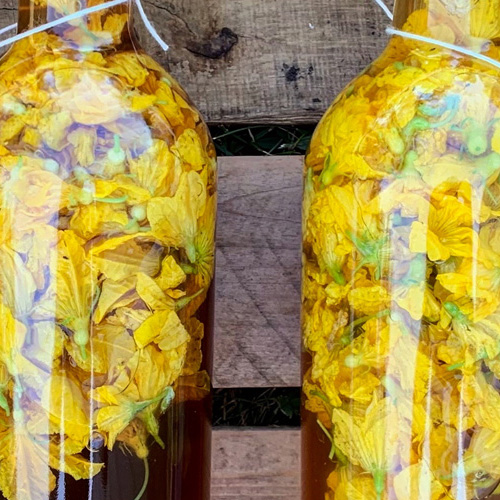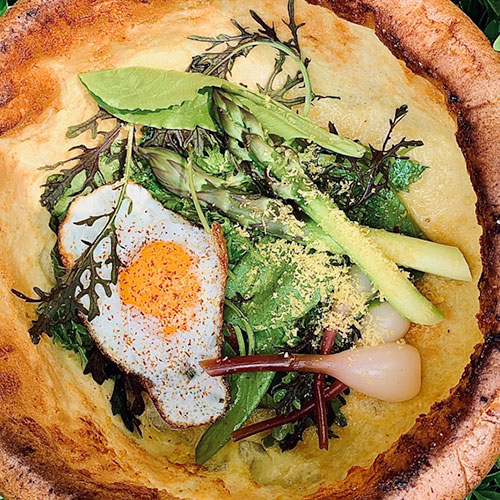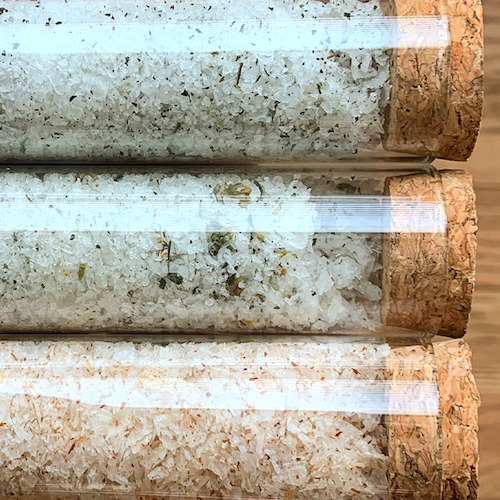I call this time of year “peak green.” Our beautiful asparagus and strawberry crops will yield to cucumbers and tomatoes, but not yet. For now, we’re sustaining ourselves on lettuces, mustard greens, snap peas, and new potatoes.
Our herb garden binds the seasons together. The herbs change too, though—cycling from leaves to flowers, seeds, and other harvests. Our lovage, which looks like parsley and tastes like celery, has just begun to send out its clusters of yellow flowers. Over the years, I’ve done what I can to use them: sprinkled them over dishes as a garnish, tossed them with roasted vegetables, pulverized them into a paste for meats. It’s never enough. So, to stretch the season, I’ve started preserving the sweet flavor of lovage blooms in vinegar.
I start with raw apple cider vinegar. I add the flowers to a jar, pour the vinegar on top, and let the mixture sit at room temperature as the flavor deepen, topping it off with vinegar as necessary. (That’s usually more apple cider vinegar, but you should use what you have, within reason. I also use mild rice and white wine vinegars.)
Then, I keep swapping out the herbs. I’ve made vinegar infusions for years, but last summer, I had the idea to layer on a year’s worth of harvests, making a “perpetual vinegar” that tastes like our garden.
Soon, when we have a wealth of tarragon, I’ll pull the lovage out and replace it with those licorice-scented leaves and stalks. Their anise flavor goes well with all kinds of allium. During high summer, I like parsley crowns and fennel pollen. Depending on your herb mix, you might try basil or oregano flowers. Build flavor like you would when seasoning a dish. And if the flavor is ever too much, you can easily dilute it with more plain vinegar.
You can—and should—strain off and use some of your perpetual vinegar as you infuse it. I like it as a base for vinaigrettes, marinades, and cocktails, and for deglazing pans full of vegetables and meat. And you don’t have to stop building your vinegar in the fall. If you dry your last harvests, you can keep infusing it into winter.




